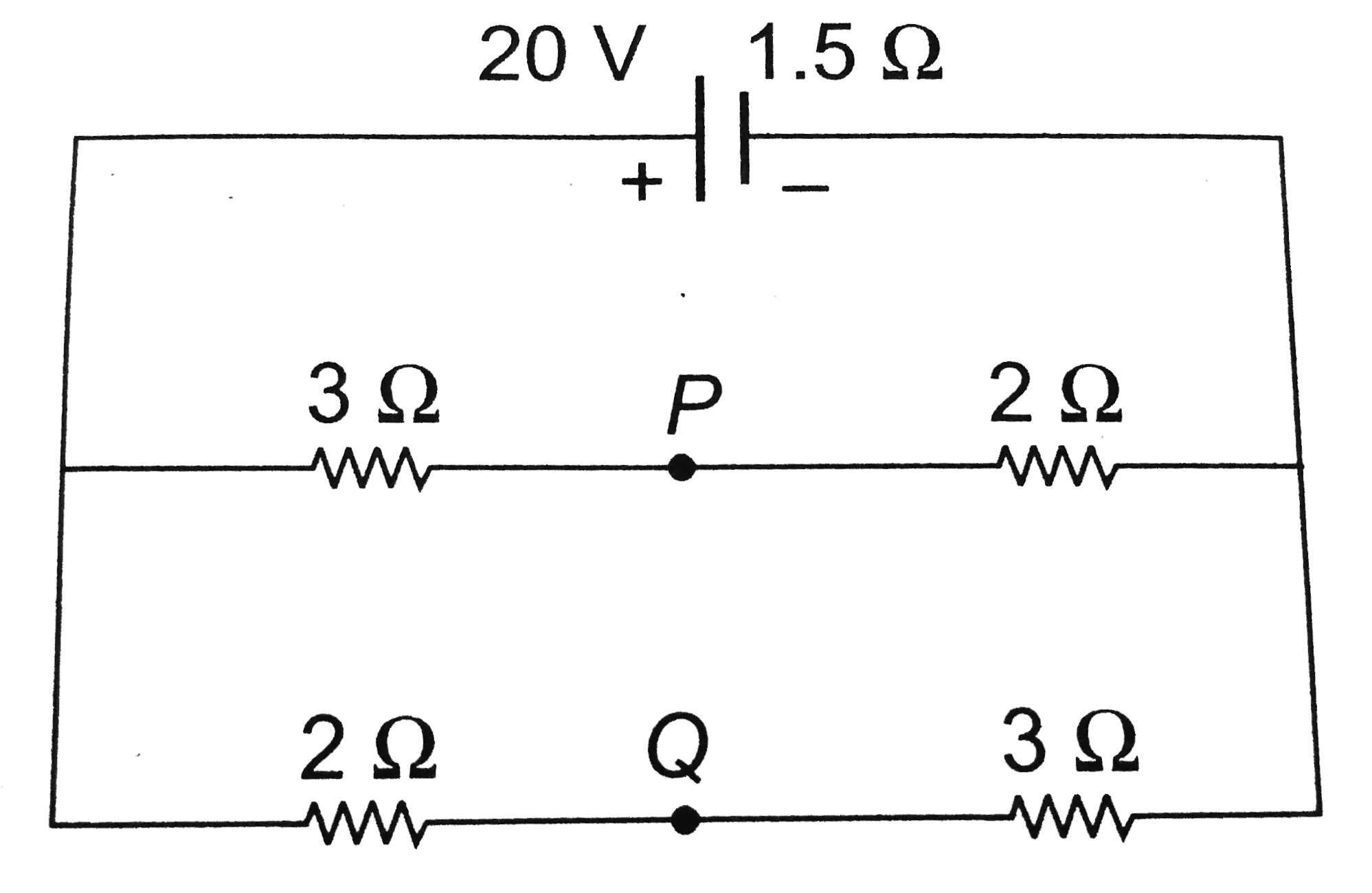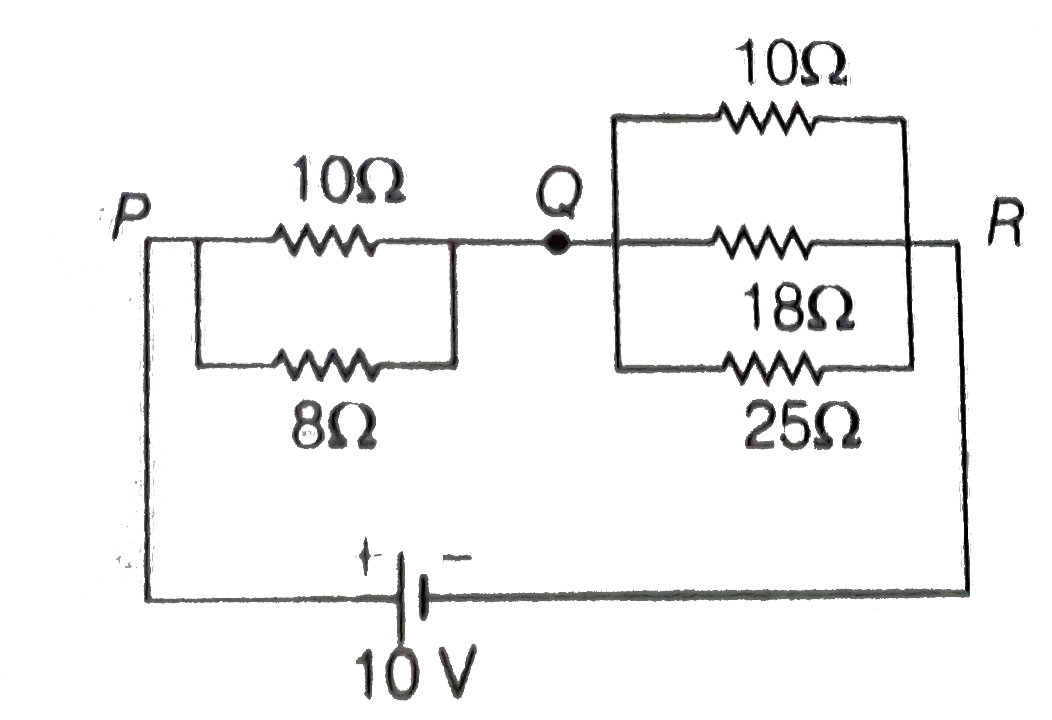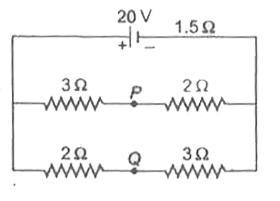The ionization potential of hydrogenic ions P and Q are VPandVQ respectively. If VQ<VP then radii ......Solution in Gujrati
rP>rQ
rP<rQ
rP=rQ
none of these
The correct Answer is:B
In electric potential V=kQr,KQ is constant
∴V∝1r∴VPVQ=rQrP
∴VQ<VP⇒rQ>rPso,rP<rQ
Topper's Solved these Questions
- BOOK - KUMAR PRAKASHANCHAPTER - ATOMSEXERCISE - Section-D -MCQs asked in AIIMS17videos
ATOMS
- BOOK - KUMAR PRAKASHANCHAPTER - ALTERNATING CURRENTS EXERCISE - SECTION-D MCQs (COMPETITIVE EXAMS)64videos
ALTERNATING CURRENTS
- BOOK - KUMAR PRAKASHANCHAPTER - BOARD'S QUESTION PAPER MARCH-2020 EXERCISE - PART-B SECTION -C4videos
BOARD'S QUESTION PAPER MARCH-2020
Similar Questions
Characteristic X-rays are produced due to ....
02:24View SolutionPower factor of AC series circuit having resistance R and inductor L having angular frequency ω is ……..
03:16View SolutionDerive an expression for current I passing through an AC circuit containing only inductor L. Draw a Phasor diagram and graph of v and I versus ωt. Explain instantaneous power and the average power.
03:48View SolutionThree capacitors C_(1),C_(2) and C_(3) are connected as shown in, The potentials of P,Q , and R are V_(1),V_(2), and V_(3) , respectively. Find the potential V_(0) at the function O . .
03:02View SolutionIf in the circuit shown below, the internal resistance of the battery is 1.5Ω and VP and VQ are the potential at P and Q respectively, what is the potential difference between the point P and Q?
 View Solution
View SolutionA disc is rolling (without slipping) on a horizontal surface. C is its center and Q and P are two points equidistant from C . Let V_(P), V_(Q) and V_(C) be the magnitude of velocities of points P, Q and C respectively, then .
03:58View SolutionIf in the circuit shown below, the internal resistance of the battery is 1Omega and V_(P) and V_(Q) are the potentials at P and Q respectively, the potential difference between te point P and Q is
03:41View SolutionIn a parabola spectrograph, the velocities of four positive ions P,Q,R and S are v_(1),v_(2),v_(3) and v_(4) respectively
04:29View SolutionFind VP−VQ in the circuit shown in figure.
 03:26View Solution
03:26View SolutionResistances of 6Omega each are connected in the manner shown in the following figure. The potential difference V_(p)-V_(q) is
04:37View Solutionदो आवेशों +q तथा –q चित्रानुसार व्यवस्थि)त हैं। A तथा B बिंदुओं पर विभव क्रमशः VA तथा VB हैं तब VA−VB ज्ञात कीजिए।
 02:40View Solution
02:40View Solution2μC charge is shifted from "P" to "Q" .If workdone by external force in this process is 160×10−6 joule,then potential difference between points "P" and "Q" i.e.VP−VQ is
View Solutionनीचे दिखाए गए परिपथ में यदि बैटरी का आंतरिक प्रतिरोध 1.5Ω है, ओर बिंदुओं P तथा Q पर क्रमश: VP तथा VQ विभव हो, तो P ओर Q के बीच में विभवांतर क्या होगा?
 View Solution
View Solutionधारा l एक तार में से प्रवाहित हो रही है इस तार के दो भाग P व Q है इनके व्यास क्रमशः d व d /2 है यदि P व Q भागो में इलेक्ट्रॉनों के औसत अनुगमन वेग VP व VQ है तब
02:02View SolutionFig (a) and (b) show the field lines of a single positive and negative charges respectively .
Give the signs of the potential difference : VP−VQ,VB−VA
 04:03View Solution
04:03View SolutionIf in the circuit shown below. The internal resistance of the battery is 1.5Omega and V_(P) and V_(Q) are the potentials at P and Q respectively, the potential difference between the points P and Q is
06:42View Solution

